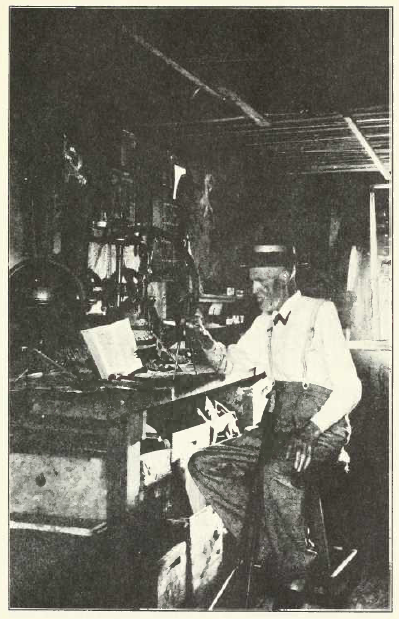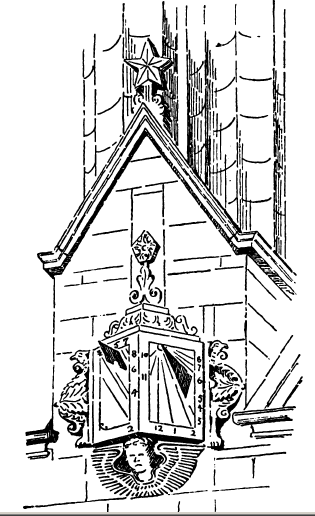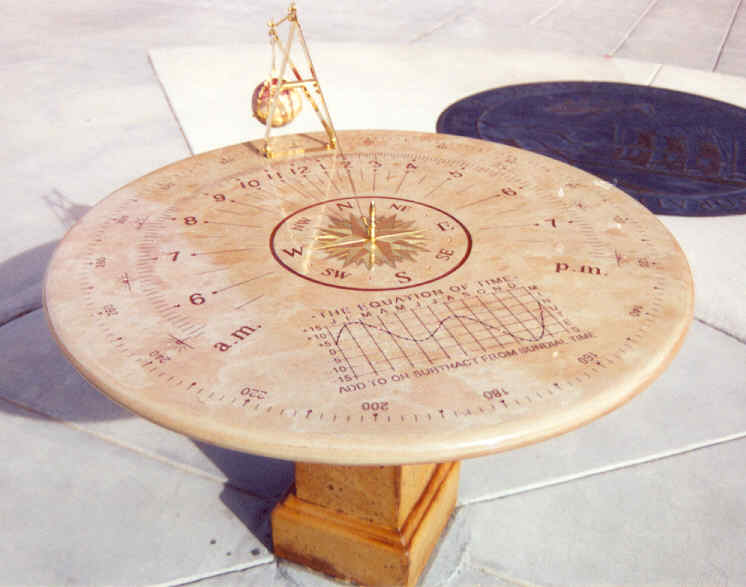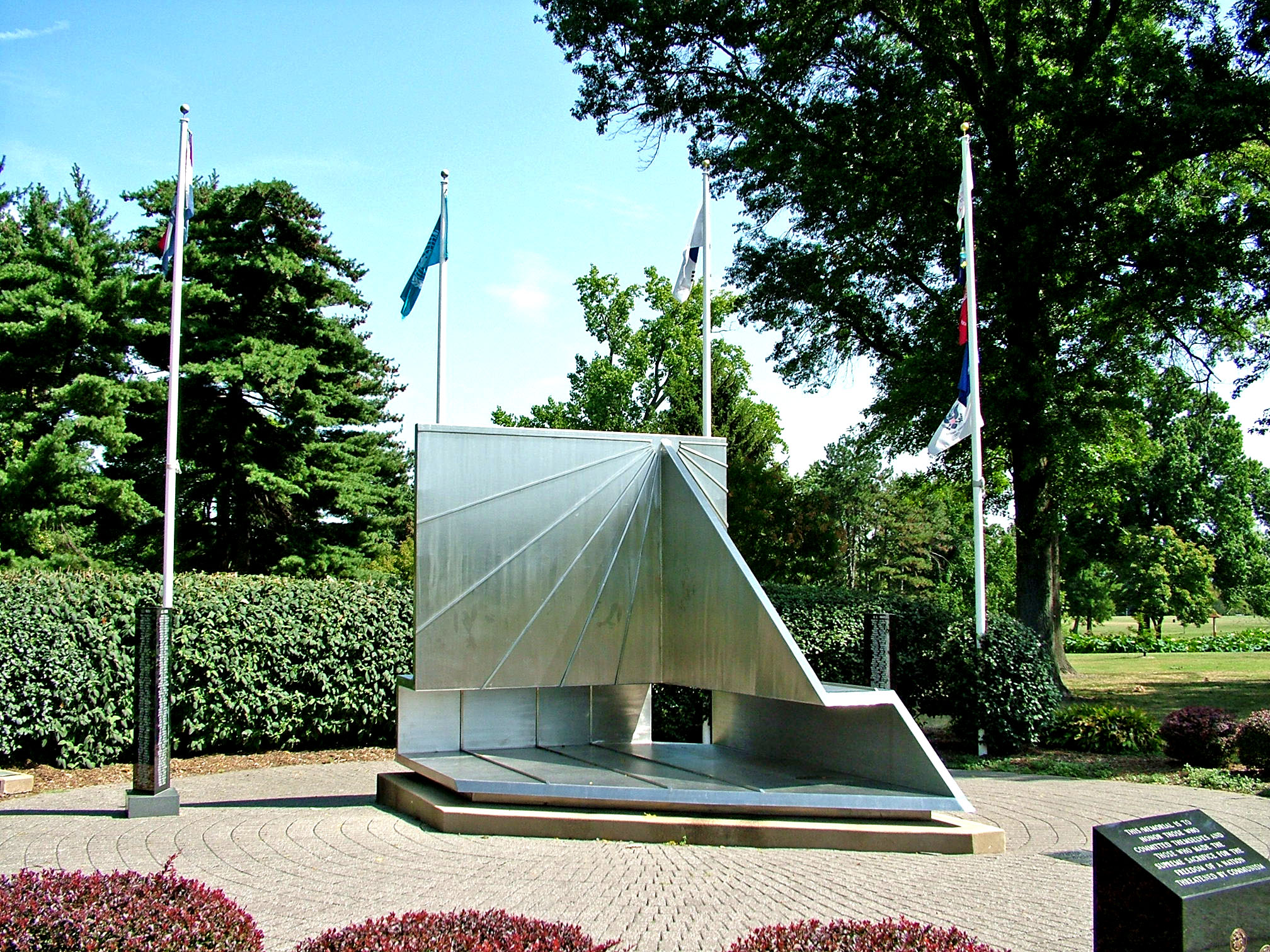This Sundials for Starters appeared in The Compendium in March 2014
Robert L. Kellogg, Ph.D.
 In 1902 Alice More Earle in her book Sun-Dials and Roses of Yesterday commented:
In 1902 Alice More Earle in her book Sun-Dials and Roses of Yesterday commented:
“Of course, there are in the United States many houses that manufacture optical and mathematical instruments and also make sun-dials. There are also those who make and sell very pretty brass dials, made to look well … regardless of the shape of the gnomon or drawing of the hour lines. I know no individual, however, save Captain Bailey, who makes accurate sun-dials for all latitudes.” [Fig. 1 of Captain John S. Bailey, 19th century dial maker - Earle].
Sundial makers are not just gnomonists, they are artisans, sculpting, cutting, hammering, and chiseling in bronze, brass, copper, steel, granite, flagstone, and slate. They form sundials from stained glass with came, create tiles in their kilns, invent new materials for sunlight sculptures and apply a variety of paints, stains, sealers and varnishes.
 In other words, sundials are made from just about any material. I have watched in awe the transformation of a block of metal into a fine gnomon as it is drilled, sawed, filed, and polished. There is the magic in the art of chemical etching: the ability to take computer generated drawings and transform them into resistant polymers by ultraviolet light from the sun that creates a protective shield over metal with just a trace of weakness, that when dipped into acid, leaves the etching of precise hour lines, elegant numerals and beautiful dial furniture artwork.
In other words, sundials are made from just about any material. I have watched in awe the transformation of a block of metal into a fine gnomon as it is drilled, sawed, filed, and polished. There is the magic in the art of chemical etching: the ability to take computer generated drawings and transform them into resistant polymers by ultraviolet light from the sun that creates a protective shield over metal with just a trace of weakness, that when dipped into acid, leaves the etching of precise hour lines, elegant numerals and beautiful dial furniture artwork.
There are stone artisans that skillfully use mallet and chisel to cut stone, following chalked hour lines to create the grooves of hour lines and numerals. Mrs. Alfred Gatty in her famous Book of Sun-Dials first published in 1872 remarked about Scottish dials that
“Skilled masons of the seventeenth and eighteenth centuries have left their mark upon the walls of their houses at Newstead, near Melrose, in many curious little dials, tow-faced, three-faced, and in one case semi-cylindrical…” (p.144) [Fig. 2. Heriot Hospital Stone Dial by William Aytoun – Maister Maissoun at Heriot – Gatty]
Stone sundials makers are still at work today. In a recent news article from Inside Tuscon Business, [http://www.insidetucsonbusiness.com/ ] Alan Petrillo interviewed John Carmichael, who:
 “characterized making sundials as ‘astronomy with applied mathematics. You need to know what the sun and planets are doing to conceptualize and understand the numbers.’ … For stone creations, Carmichael uses a flagstone slab weighing 150 pounds to cut a 26-inch-diameter sundial, which takes a couple of months to make. The finished sundial weighs about 80 pounds.” … “Carmichael has a love of carving stone, but admitted, ‘Stone has parts of the process that I don’t enjoy at all. The raw rock out of the quarry is heavy, and I have to get on my hands and knees to use a diamond cutter flushed by water to cut the stone. I get covered in mud, and sometimes it’s a chore to get it to a size I can work with.’ … [An] example of Carmichael’s work can be seen in Tohono Chul Park off West Ina Road, while his monumental sundials stand at the entrance to Innovation Corporate Center in Oro Valley.” [Fig. 3 Carmichael Flagstone Dial at Bullhead City – NASS #458]
“characterized making sundials as ‘astronomy with applied mathematics. You need to know what the sun and planets are doing to conceptualize and understand the numbers.’ … For stone creations, Carmichael uses a flagstone slab weighing 150 pounds to cut a 26-inch-diameter sundial, which takes a couple of months to make. The finished sundial weighs about 80 pounds.” … “Carmichael has a love of carving stone, but admitted, ‘Stone has parts of the process that I don’t enjoy at all. The raw rock out of the quarry is heavy, and I have to get on my hands and knees to use a diamond cutter flushed by water to cut the stone. I get covered in mud, and sometimes it’s a chore to get it to a size I can work with.’ … [An] example of Carmichael’s work can be seen in Tohono Chul Park off West Ina Road, while his monumental sundials stand at the entrance to Innovation Corporate Center in Oro Valley.” [Fig. 3 Carmichael Flagstone Dial at Bullhead City – NASS #458]
Mrs. Gatty also commented on the materials used for sundials (Chapter IX), doing a bit of forensic research in accounting:
“From the frequent entries of payments ‘for a Diall’ in churchwardens’ accounts we may judge that there was hardly a church without one, and also that they did not last very long. Stone, wood, and paint are alike perishable, and metal might be stolen; but still the timekeeper was replaced up to the present century …”
Consider the advice from the National Bureau of Standards (now the National Institute of Science and Technology – NIST). In Circular No. 402, Sundials, prepared in 1933 by Prof. R.E. Gould, where he made recommendations for a simple horizontal dial:
 “In choosing the material on which to lay out the dial, consideration should be given to durability, resistance to weather, and legibility. A thickness of not less than one-quarter of an inch is recommended to assure rigidity of the surface. Bronze or gunmetal is generally used, and seems to be very satisfactory under the conditions to which sundials are exposed. Stainless steel stands up well and is not subject to marked discoloration. A plate of optical glass about one inch thick with etched lines might serve very well, but is subject to breakage and chipping. Copper, aluminum, brass, silver, German silver, and most of the other common metals are subject to tarnish or oxidation, and in a short time the lines become indistinct. Iron rusts too easily to make a good sundial material. The use of chromium plate on a base of some of the metals mentioned might make a very good dial material. [Note: bright metals do not show shadows well as demonstrated by the beautiful stainless steel dial in Fig. 4, the Korean War Memorial Sundial at St. Louis Forest Park, MO – NASS #54]
“In choosing the material on which to lay out the dial, consideration should be given to durability, resistance to weather, and legibility. A thickness of not less than one-quarter of an inch is recommended to assure rigidity of the surface. Bronze or gunmetal is generally used, and seems to be very satisfactory under the conditions to which sundials are exposed. Stainless steel stands up well and is not subject to marked discoloration. A plate of optical glass about one inch thick with etched lines might serve very well, but is subject to breakage and chipping. Copper, aluminum, brass, silver, German silver, and most of the other common metals are subject to tarnish or oxidation, and in a short time the lines become indistinct. Iron rusts too easily to make a good sundial material. The use of chromium plate on a base of some of the metals mentioned might make a very good dial material. [Note: bright metals do not show shadows well as demonstrated by the beautiful stainless steel dial in Fig. 4, the Korean War Memorial Sundial at St. Louis Forest Park, MO – NASS #54]
“To avoid any possibility of electrolysis, the gnomon and any screws making contact with the dial should be of the same material as the dial.
“A good concrete or stone foundation on a firm base makes the most satisfactory means of assuring stability of mounting. The pedestal upon which the dial is to be mounted must be secured to this foundation in a manner to make it perfectly rigid. Materials for the pedestal must be durable and firm. Concrete, marble, stone, or brick make very good pedestals. Wood is not suitable for either the pedestal or the dial because of likelihood of distortion and decay.”
What is your favorite material for making sundials? I must confess that I prefer paper dials since children can quickly cut them out and assemble them. And once again NASS and the Analemma Society will be presenting cut-out dials and sundial information to students, parents and teachers at the USA Science and Engineering Festival (USASEF) being held in Washington Convention Center, Washington D.C. April 25-27, 2014. Find us at the Sundials – World’s Oldest Clocks booth. See you there!
